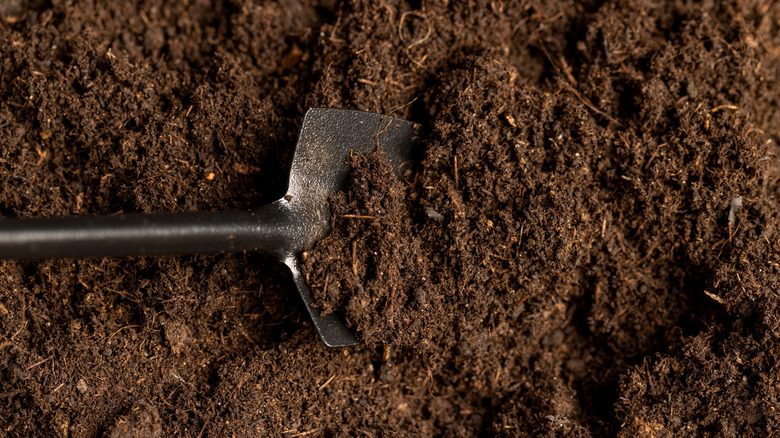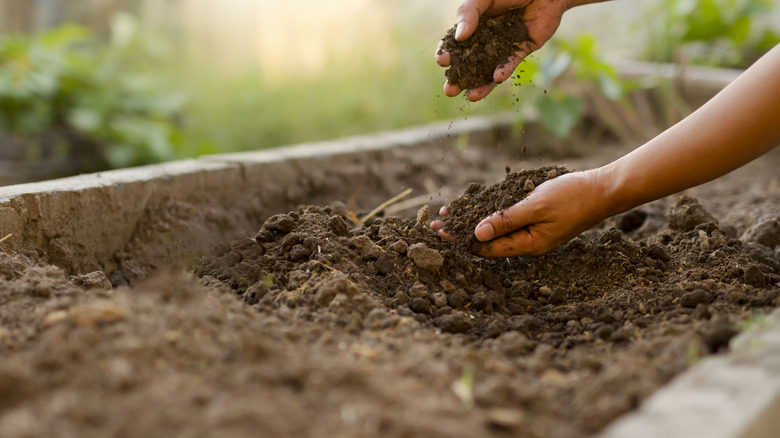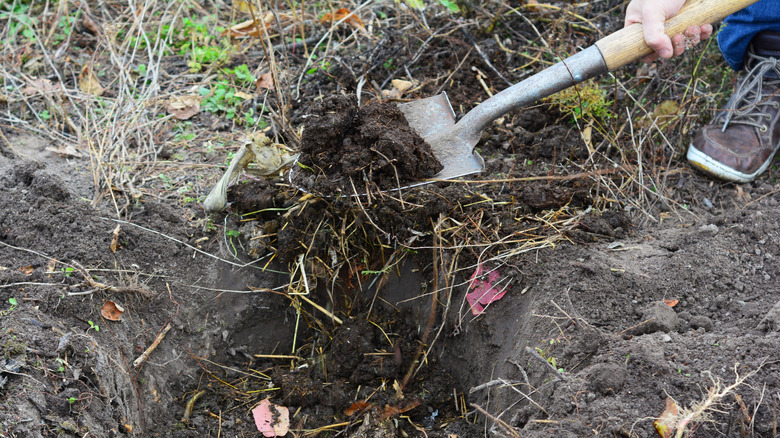Old-Fashioned Ways To Revive Garden Soil (And How To Do It Today)
I know someone who said the main reason she doesn't enjoy gardening is because she "doesn't like to get dirty." Well, friends, gardening is dirty work! Soil is the most important aspect of gardening. Healthy soil not only nurtures plants but also helps improve the land by preventing erosion and preserving the biodiversity that sustains flora and fauna alike. In my work as a professional gardener, I often help clients with soil improvement. There are some easy, old-fashioned ways to revive your garden soil to help things grow and thrive.
One principle guiding agriculture and horticulture is to look to nature for clues on how to do things. For example, plants grow abundantly in a deciduous forest, so it makes sense to emulate how that soil stays healthy. The forest floor is an undisturbed ecosystem where plants and animals live and die in an intricate symbiotic system. The process of decay forms more beneficial microorganisms that enrich the soil. That's the basis for the modern invention of the compost heap: a miniature version of a soil environment rich with decaying plant matter.
Learning how to prep your garden soil is key to garden success and will help plants of all kinds (flowers, vegetables, trees, and shrubs) thrive and beautify your landscape. Adding amendments and loosening up compacted soil are two basic steps for improving your soil's texture and drainage. Here are some other simple ways to improve your garden soil using tried and true methods.
Which soil amendments are best?
The fastest way to improve your soil is to add amendments. There are a few ways to do this. First, determine the type of soil you have so you can choose the best amendments and the easiest way to add them. If you have loose, dry, sandy soil, mixing in some compost is relatively easy. This will help absorb more moisture and encourage some microbial action that will increase organic matter. Adding some earthworms is also a good move, but if you add organic materials like used coffee grounds, this will also attract earthworms.
If you have thick clay soil in your garden, this can be a bit more challenging. You need to break up the soil so that it will absorb the benefits of the amendments. Break up the top few inches of soil into chunks using a tiller or a garden fork. Then add some loose but rich amendments like compost, shredded leaves, pine needles, coffee grounds, and wood ash (from natural, untreated wood only). Other organic materials like peat moss and grass clippings can also improve soil health, drainage, and texture.
When adding amendments, I find it's easiest to mix them all together separately in a wheelbarrow or bucket, then cover this mixture when not in use. Then, if I want to use it on different areas of the garden, I have it available and can add it where it's needed. It's also good to lightly moisten the soil when you add amendments, especially if it's not going to rain right away. This helps get some microbial action going to add beneficial microorganisms to feed your soil.
When to make soil improvements
You can add soil amendments at any time of year, but there are advantages to doing it in spring or autumn. In spring, mixing in the amendments just before planting gives your garden a good, healthy start to the season. If you're planting spring-blooming bulbs in the fall, like tulips or daffodils, there are amendments recommended for these, like bone meal, but I find adding some peat moss and compost works great.
You can also put soil amendments over the top layer of soil in the fall, especially around the base of your perennials: this is known as topdressing (similar to topdressing your lawn with compost or topsoil). I do this with some aged manure for my peonies and other long-lived perennials, as it will break down and add nutrients through the winter. You can also use a natural mulch on your garden beds or around shrubs, such as shredded pine bark, pine straw, or natural wood chips. Dyed mulches don't do much to improve soil texture, in my experience.
Another approach to improving your soil in autumn is to upcycle the yard waste from your garden clean-up. Put down a 2 to 4-inch layer of materials like fallen leaves, grass clippings, and pine needles over the surface of your soil as a kind of late-season mulch. This material will break down under winter's rain or snow, delivering nutrients to the soil, and you can rake it away in spring if you desire, or add it to your compost heap.


